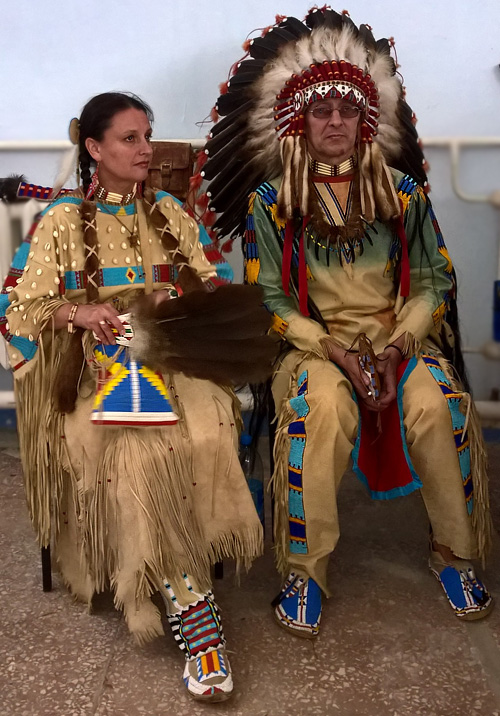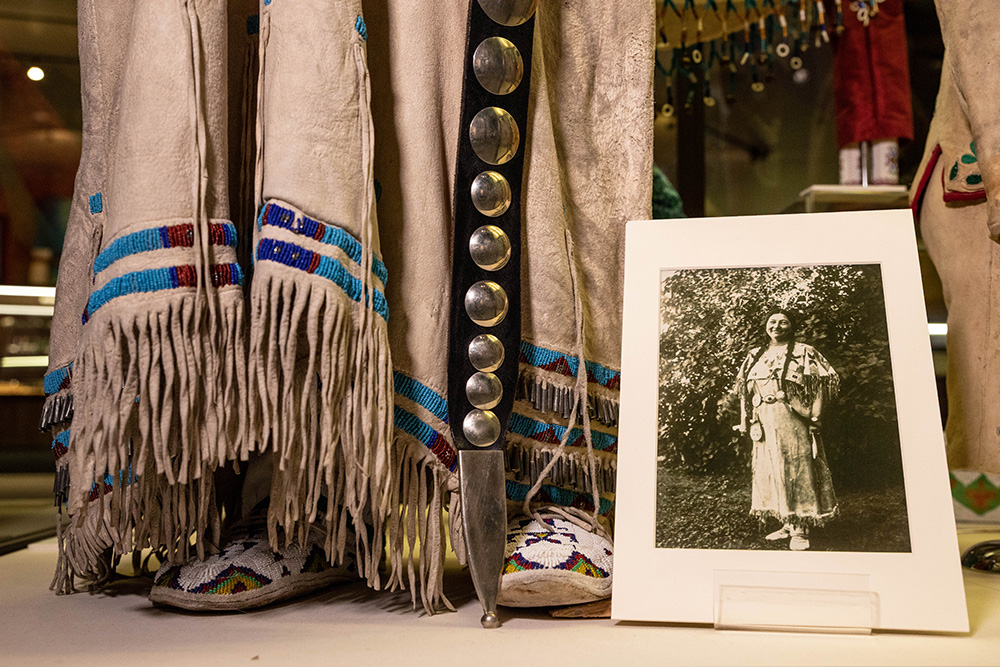
Traditional Native American Clothing: A Tapestry of Regional Styles and Enduring Cultural Significance
Before European contact, North America was home to hundreds of distinct Native nations, each with its own language, customs, and, crucially, its own style of dress. Far from a monolithic "Native American clothing," the traditional attire of Indigenous peoples across the continent was a vibrant, diverse, and deeply symbolic expression of identity, environment, spirituality, and social structure. It was never merely about covering the body; it was a living canvas reflecting identity, spirituality, status, and connection to the land. This article delves into the rich tapestry of traditional Native American clothing, exploring the distinct regional styles shaped by climate and available resources, and illuminating the profound cultural significance embedded in every stitch, bead, and feather.
The Diverse Canvas: Regional Styles
The continent’s vast ecological diversity dictated the materials and forms of clothing, leading to distinct regional styles. From the frigid North to the arid Southwest, Indigenous ingenuity transformed natural resources into functional, beautiful, and culturally resonant garments.
The Great Plains: Power, Symbolism, and the Buffalo
Perhaps the most recognizable, yet often misunderstood, is the attire of the Great Plains tribes – nations like the Lakota, Cheyenne, Comanche, and Blackfeet. Their clothing was intrinsically linked to the buffalo, a central figure in their lives providing food, shelter, and material for garments. Deerskin, elk hide, and antelope hide were also extensively used. Men typically wore breechcloths and leggings, often adorned with intricate beadwork, porcupine quills, or painted designs. Women wore elegant, usually two-piece dresses made from tanned hides, often decorated with elks’ teeth, shells, or glass beads obtained through trade.

The iconic Plains war bonnet, often mistakenly associated with all Native Americans, was a sacred item, its feathers earned through acts of bravery and leadership. Each eagle feather represented a specific deed, making the bonnet a visual biography of the wearer’s accomplishments. Other adornments included hair pipes made from shell or bone, elaborate breastplates, and a variety of ceremonial regalia. Moccasins, soft-soled and often beaded, were essential for traversing the vast prairies. The Plains style is a testament to the meticulous craftsmanship and the profound spiritual connection these nations held with the animals that sustained them.
The Arid Southwest: Woven Stories and Desert Hues
In the sun-baked landscapes of the Southwest, home to the Pueblo peoples (Hopi, Zuni, Taos), Navajo (Diné), and Apache, clothing adapted to the hot, dry climate. Early garments were often made from woven cotton, a crop cultivated by some Pueblo groups, or plant fibers like yucca. When sheep were introduced by the Spanish, wool became a primary material, especially for the Navajo, who developed unparalleled weaving techniques.
Navajo blankets and rugs, known for their complex geometric patterns and rich natural dyes, were not just utilitarian items but highly prized works of art and trade goods. Men wore kilts, breechcloths, or woven shirts, while women wore woven dresses (often called "manta") held at the shoulder, sometimes layered with a sash or belt. Moccasins were common, often made with hard soles for protection against rocky terrain. The weaving traditions of the Navajo (Diné), passed down through generations, are not just textile production; they are narratives woven into fabric, often reflecting the sacred ‘Hózhó’ or balance and beauty. Silver and turquoise jewelry, while accessories, became deeply intertwined with the region’s traditional aesthetic, signifying status and cultural identity.
The Eastern Woodlands: Forest Bounty and Intricate Adornment
From the dense forests of the Northeast and Southeast, tribes like the Iroquois (Haudenosaunee), Cherokee, Creek, and Ojibwe utilized the rich bounty of their environment. Deerskin was a primary material, supplemented by other animal hides and woven plant fibers like nettle or basswood. Men wore breechcloths and leggings, often decorated with porcupine quills, wampum beads (made from shells), or intricate ribbonwork. Women wore wrap-around skirts, sometimes with short capes or upper garments.
The Woodlands peoples were renowned for their exquisite quillwork and beadwork, creating elaborate floral designs that mirrored the forest around them. Wampum belts, made from purple and white shell beads, were not just decorative but served as mnemonic devices, recording treaties, histories, and important events. Feather capes, headdresses, and intricate moccasins were also common. The clothing here often reflected the vibrant greens and browns of the forest, punctuated by the bright colors of natural dyes and shell adornments.
The Northwest Coast: Cedar, Climate, and Clan Identity
Along the rainy, forested coastlines of the Pacific Northwest, home to nations like the Haida, Tlingit, Kwakwakaʼwakw, and Salish, clothing was adapted to a wet, temperate climate. Cedar bark, painstakingly processed to be soft and pliable, was a foundational material, woven into skirts, capes, and hats that provided excellent rain protection. Animal hides, especially sea otter and deer, were also used.

A distinctive feature was the Chilkat weaving, an intricate technique using mountain goat wool and shredded cedar bark to create blankets and tunics with complex crest designs representing clan animals and ancestral spirits. Button blankets, adorned with mother-of-pearl buttons in intricate designs, were also significant ceremonial garments. Elaborate masks, often worn with specific regalia during potlatches and other ceremonies, completed the powerful visual statements of Northwest Coast attire, emphasizing clan identity and connection to the spirit world.
The Great Basin and California: Simplicity and Resourcefulness
In the challenging environments of the Great Basin (e.g., Paiute, Shoshone) and California (e.g., Chumash, Miwok), resources were often scarcer, leading to simpler, highly functional clothing. Rabbit skin robes provided warmth in the cold deserts, while skirts and aprons made from woven plant fibers or shredded bark were common in warmer areas. Basketry hats, often finely woven, were worn by women, particularly in California, for protection and as part of their everyday dress. Adornments might include feathers, shells, or seeds, reflecting the immediate natural surroundings. This simplicity spoke volumes about the intimate relationship these peoples had with their often-harsh environments, making the most of every available resource.
The Southeast: Lightness, Ceremony, and Shell Art
The warm, humid climate of the Southeast (e.g., Seminole, Choctaw, Natchez) influenced lighter clothing. Deerskin was common, often fringed and adorned. Woven plant fibers like Spanish moss or mulberry bark were also used for skirts and cloaks. Men often wore breechcloths and sometimes light shirts, while women wore wrap-around skirts. Elaborate ceremonial attire included feather capes, shell gorgets (engraved shell pendants), and intricate beadwork. The Seminole, in particular, became known for their colorful patchwork clothing, a distinctive style that emerged in the 19th century but drew upon earlier traditions of geometric design.
Beyond Adornment: The Profound Cultural Significance
Beyond their regional variations, traditional Native American clothing held immense cultural significance, acting as a powerful medium for communication, spiritual connection, and social organization.
Identity and Belonging: Clothing was a clear marker of tribal affiliation, clan membership, and individual identity. Specific patterns, colors, and types of adornment instantly communicated who a person was and where they came from. For example, the particular style of moccasin or the design of a beadwork pattern could immediately identify an individual’s nation.
Spirituality and Connection to Nature: Many garments were imbued with spiritual meaning. Animal hides connected the wearer to the spirit of the animal, often hunted with reverence and gratitude. Feathers, particularly eagle feathers, were sacred and symbolized qualities like courage, wisdom, and a connection to the Creator. Ceremonial attire was designed to facilitate spiritual communication, embody sacred narratives, or prepare individuals for ritual. "Every fiber, every bead, every hide told a story of ingenuity, resourcefulness, and deep reverence for the natural world," underscoring the spiritual dimension of material culture.
Status and Achievement: The elaborateness of clothing often reflected a person’s status within their community. Leaders, warriors, healers, and respected elders wore specific regalia that indicated their roles and accomplishments. The number of eagle feathers in a war bonnet, the intricacy of beadwork, or the rarity of materials could all signify wealth, skill, or acts of bravery.
Artistry and Craftsmanship: The creation of traditional clothing was a sophisticated art form. Tanning hides, preparing quills, weaving fibers, and crafting beads were labor-intensive processes requiring immense skill, patience, and artistic vision. These crafts were often passed down through generations, preserving cultural knowledge and aesthetic traditions. The beauty and complexity of these garments are a testament to the high level of artistic expression inherent in Native American cultures.
A Living Legacy: Modern Expressions and Revitalization
While the demands of modern life have led to the adoption of contemporary clothing styles, traditional Native American clothing is far from a relic of the past. Today, it continues to be a vibrant, living art form, proudly displayed at powwows, ceremonies, and cultural gatherings. These events serve as crucial platforms for cultural preservation and revitalization, where traditional regalia is worn, admired, and celebrated.
Contemporary Native artists and designers are also reinterpreting traditional styles, blending ancestral techniques with modern aesthetics to create new forms of expression that honor the past while looking to the future. This ongoing engagement ensures that the rich legacy of Native American clothing remains dynamic, evolving, and deeply significant to Indigenous communities across North America.
Conclusion
Traditional Native American clothing is a powerful testament to the ingenuity, artistry, and spiritual depth of Indigenous cultures. Far from a singular aesthetic, it represents a kaleidoscope of regional styles, each shaped by unique environments and cultural values. Every garment, from a simple deerskin dress to an elaborate Chilkat blanket or a feathered war bonnet, tells a story of identity, resilience, and a profound connection to the land and the spirit world. As a living heritage, it continues to inspire, educate, and affirm the enduring strength and beauty of Native American traditions in the modern world.